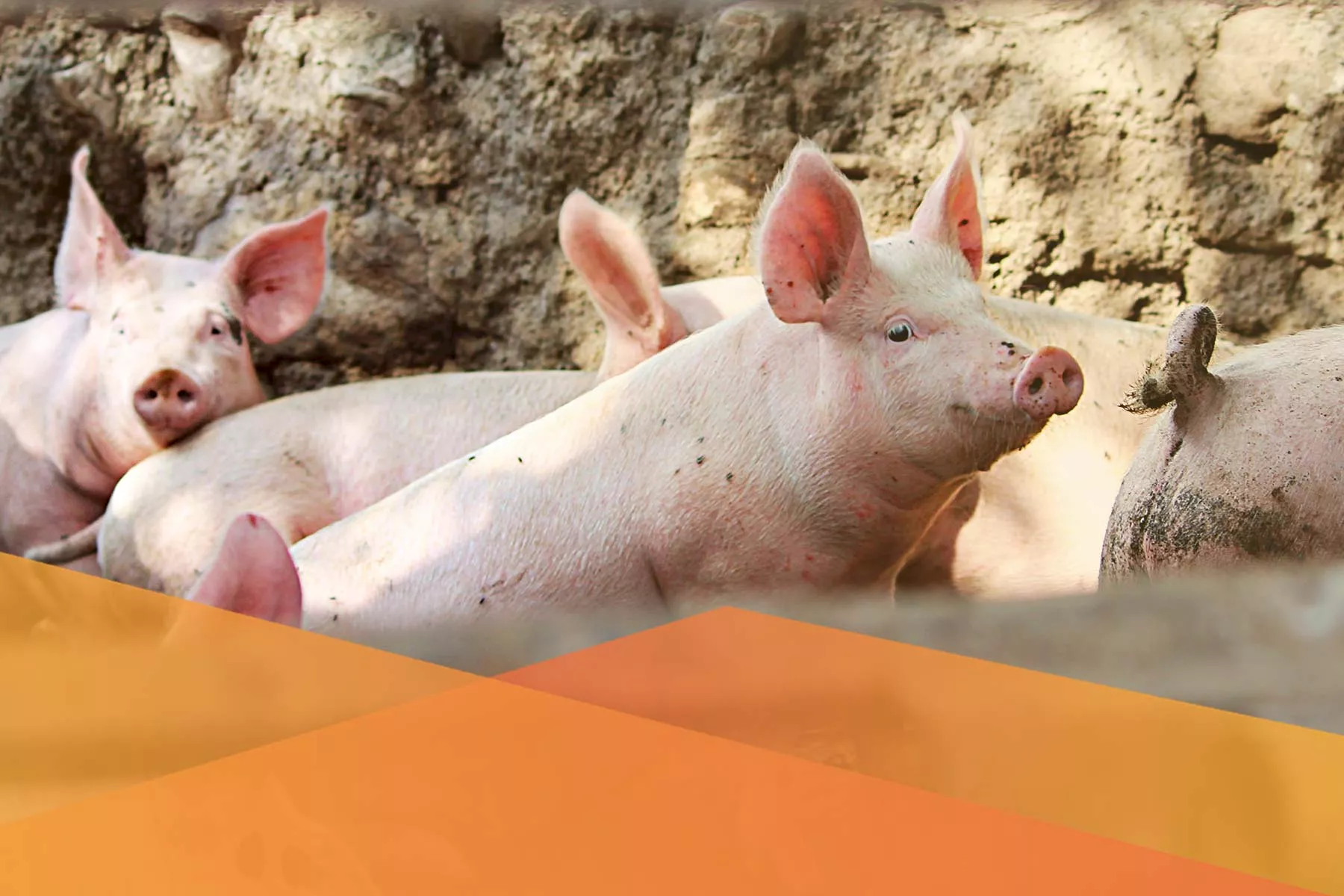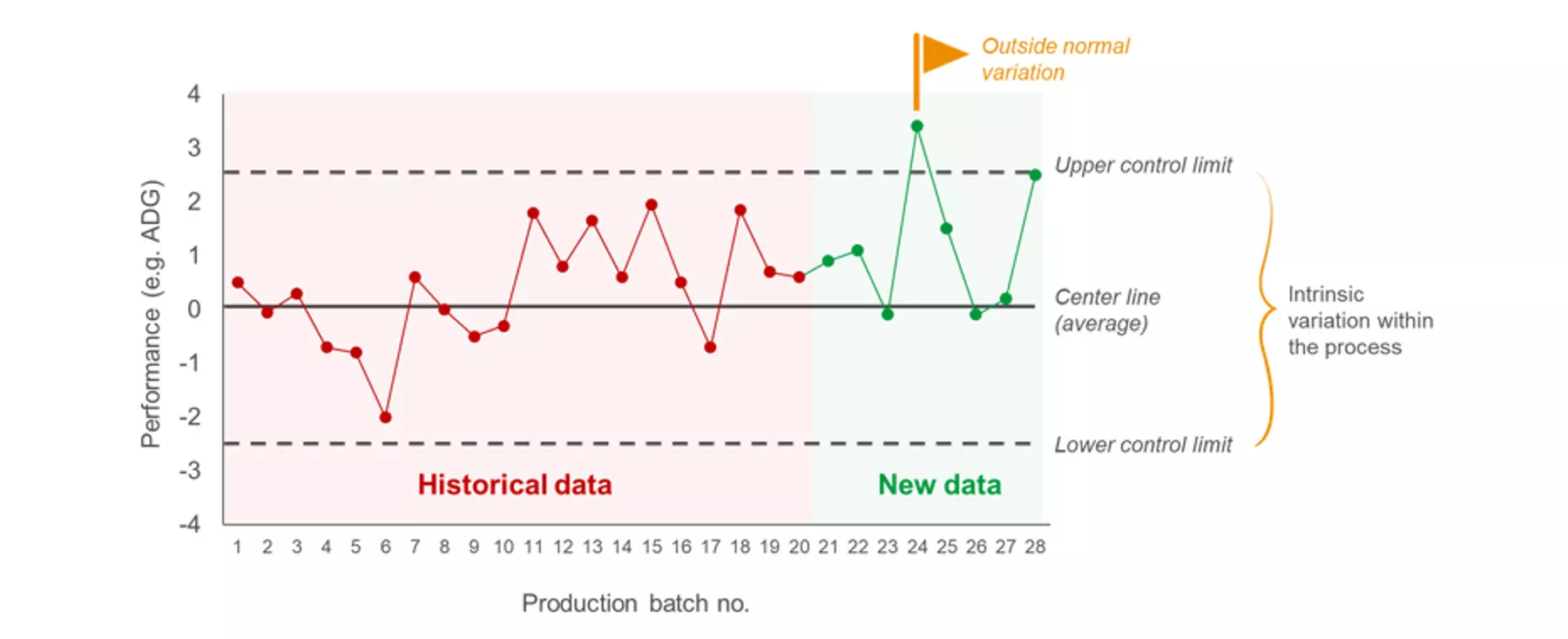
First of all, I wonder, what exactly is the trial dilemma?
The trial dilemma lies in the fact that we want to research how to solve real-world problems with our solutions and concepts. However, the scientific settings in which we test our products usually don’t resemble the practical conditions on farms. They’re too clean and the settings are highly standardised to provide data with as little variation as possible – it’s just not realistic.
So, why don’t you just do field trials instead?
Yes, field trials provide real farm conditions and practical challenges. However, these challenges lead to a high variation in the results, therefore there is only a limited possibility for a scientific evaluation of the effects, especially because we can’t get a big number of replicates to control for the variation.
Indeed, that is a dilemma. How did you manage to solve this?
We learned of a method for analysing data called “Statistical Process Control” (SPC). With this method, it is possible to analyze a large number of replicates in the field and account for variability in common factors, such as feed, health status, season of the year etc. This offers the opportunity to analyze real world data with a statistically valid method.
That sounds perfect; how come this method is not commonly used?
SPC is not common in animal production. It has been developed to minimize variation in products which are manufactured in an assembly line and need to be practically identical. For example, it is used for the manufacturing process of parts for the German automotive industry. However, the statistical method of SPC can be adapted for trials in animal production and we got in touch with the leading expert of SPC trials in animals, Dr. Alberto Morillo, the founder of the Spanish research organisation Tests & Trials, and started a cooperation with him.
How exactly does SPC work?
In essence, instead of a simultaneous negative control and a treatment group, you use historical data as control. All you need is a farm with very good records of the parameters you’re interested in and of all the factors that cause variation in the results. For example, performance is influenced by factors such as feed composition, genetics, temperature etc. The historical data is used to calculate the normal, intrinsic variation of performance results. If you introduce a new factor, in our case Sangrovit®, you can then measure how much “extraordinary” variation this causes. Of course, you will only be able to measure it if your new factor actually causes a change in the results. Spoiler alert: it did.

Sounds quite simple. But how do you find a farm with such detailed records?
Dr. Morillo arranged a trial at a large pig integrator in northern Spain. They keep very accurate records because they breed their own replacements. We were able to generate control data of performance (average daily gain, feed intake and FCR), mortality and medication cost and evaluate the effect of Sangrovit®® during the entire grower-finisher period, from day 70 of life until slaughter at 120kg.
And what did the SPC show after adding Sangrovit®?
We were very pleased to see that the SPC confirmed results from previous scientific trials and our customer experiences from the field: while the feed intake of the animals remained unchanged, we had a significant increase in average daily gain and a decrease in FCR by astonishing 14 points. Unfortunately, we could not see an effect on mortality, which is usually a very reliable parameter. However, during the trial period, there was a big winter storm in our region which caused a 24-hour power outage in some of the pig houses, leading to considerable losses. Considering this, we can assume that, before the storm, we did positively influence mortality, because the final result was the same as during the control period, not higher. Finally, the biggest effect was seen in medication cost per animal which was reduced by over 30 %, highlighting the amazing potential for economic savings through the use of Sangrovit®.

That’s impressive. But I can’t help but wonder – if you use historical data as control, how can you be sure that the positive results are not simply due to genetic improvements?
The genetic improvement over time is one of the factors that are considered in the SPC analysis, so this can be controlled for. Nevertheless, we wondered the same thing. So we did the same thing the other way around: we took out Sangrovit® from the feed to see what would happen. The effects were more difficult to detect due to the shorter control period, but we saw that, numerically, medication cost increased once more and in FCR we even saw a statistically significant increase by six points.
This is remarkable proof that Sangrovit® works to improve animal health and performance in the real world. What an intriguing method to achieve this transfer of scientific evidence into practice, thank you for familiarising us with SPC!
Contact our experts or send us a message. We will contact you as soon as possible.